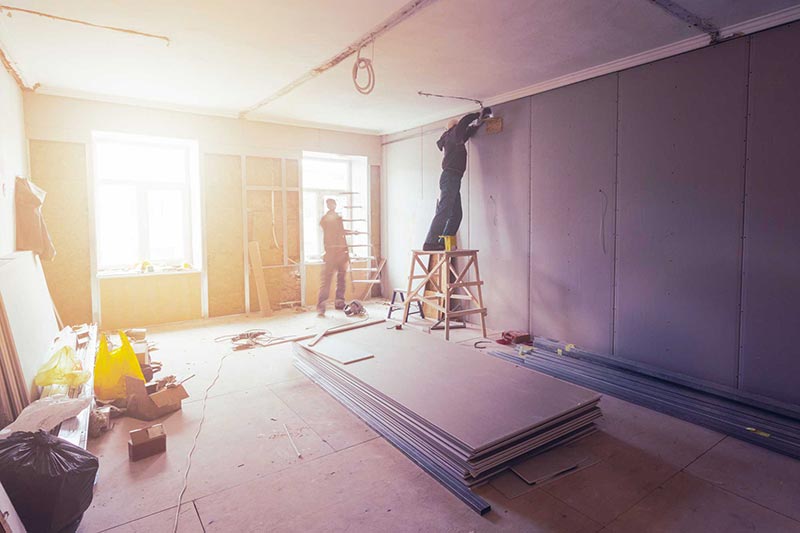
How to Clean Up Mold
Mold can grow on nearly any surface – and it can have long-lasting health effects if not properly cleaned (or if you inhale it while you clean). If you find mold in your home, take steps to deal with it right away.
Can You Clean the Mold Yourself?
If the area of mold growth is less than nine-square-feet, you may be able to clean it yourself. However, you should know that all mold types are potentially harmful to your health.
Mold can cause allergic reactions, bronchitis, sinusitis, and respiratory infections. Those with asthma may have more severe reactions to mold. People with compromised immune systems, lung diseases, or other conditions could be at greater risk of developing an infection in their lungs.
You should contact mold removal specialists if you have health problems, the mold growth is larger than nine-square-feet, or if you can’t or won’t follow the following steps to clean the area correctly.
How to Remove Mold Yourself
Find the Cause
Mold needs three things to grow – the proper temperature, a nutrition source (like wood, paper, fabric, or drywall) and moisture.
To remove the mold, first, you need to find and stop any water sources. Cutting off the source of the problem is important to ensure the mold doesn’t return.
Wear Protection
Cleaning up mold will increase the mold spores in the air, which can cause coughing and allergic reactions.
Before cleaning, you should wear rubber gloves, goggles, and an N95 respirator. You can visit this page from the EPA for a complete list of protective gear to wear.
Check Your HVAC System
Check whether your heating or air duct system has mold near the intake or whether it was the source of moisture.
If it might be contaminated with mold, don’t run your HVAC system. It can spread mold throughout your entire home.
Check for Hidden Mold
Mold can grow underneath wallpaper, behind framed paintings or photos, inside ducts, behind furniture, or beneath the carpet.
Examine any areas mold might lurk and any areas that could be exposed to moisture or mold spores.
Remove Wet Items
Remove porous items that have been wet for more than 48 hours. If they cannot be deep cleaned, throw them out in sealed, heavy-duty trash bags. Porous, noncleanable items may include carpet, wallpaper, upholstery, wood, and drywall.
Any items not properly cleaned can continue to contaminate your home with mold spores or regrow mold.
Make a Cleaning Solution
Mix a cleaning solution with water and a household cleaner (according to the manufacturer’s instructions) in a bucket in a well-ventilated area and put it in a spray bottle.
Bleach can reduce mold and bacteria; however, you should never mix it with household cleaners.
If using bleach, mix one cup bleach with one gallon water in the bucket and transfer it to the spray bottle. Use goggles and gloves when mixing bleach and do it in a well-ventilated area with open windows.
Seal the Room
For larger mold removal projects, seal off the room with plastic sheets at least 4 mm thick and with tape. Seal off ducts or vents to the room. Don’t let children or pets in the room and don’t eat, drink, or smoke while cleaning.
Clean the Area
Spray the surface, working from the top down and rub it down with a clean towel. Repeat until mold is removed; change towels frequently. If using a bleach/water solution, let the solution sit on the surface for 15 minutes before rubbing it off.
Vacuum
Use a high-efficiency particulate air (HEPA) vacuum (you may be able to rent one) to clean the area for at least one minute per square foot. Note that dead mold spores can still cause an allergic reaction. You shouldn’t use a regular vacuum – you want to get rid of all mold spores lingering and you don’t want to use a vacuum that could spread spores more.
Dehumidify
Use a dehumidifier to keep the area dry during and after cleaning.
Disposal
Throw away towels and cleaning materials in a heavy-duty trash bag. Launder the clothes separately from all other clothes, or throw them away.
Contact Mold Remediation Specialists
Cleaning up mold can be a challenge. Plus, mold can be toxic and result in long-lasting health issues, even after you leave your home.
When in doubt, contact the pros at Professional Restoration at 303-922-4001. We offer free estimates through the Denver metro area.
For more healthy home tips, ‘like’ Professional Restoration on Facebook, or follow us on Twitter.

